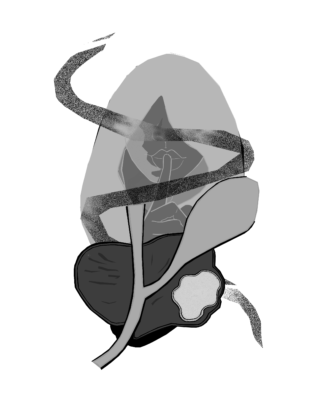PEOPLE who start feeling dizzy, frazzled, and nervous the moment they step into an elevator are most of the time mistaken to be weird. They feel their heart beat faster and their hands become cold and clammy as they witness the steel doors slowly close the gap between their feet and the ground. As much as possible, these people will prefer the long and tiresome stairs instead.
But that is not weirdness and craziness at all. According to Dr. Rosalito de Guzman, head of the Department of Psychology of the College of Science, having a period of intense fear and discomfort is brought about by phobia of closed spaces (claustrophobia) like the elevator.
Dr. de Guzman said that phobia is an excessive and irrational fear because there is no reason or cause of the fear. He also said that it renders the person incapacitated when confronted with the feared object or situation, which leads into an avoidance of the subject or activity.
More than fear
The fourth edition of the Diagnostic and Statistical Manual of Mental disorders (DSM-IV) used by mental-health professionals to make their various diagnoses lists three types of phobias – agoraphobia, specific phobia and social phobia. Agoraphobia is defined as anxiety about being in places or situations wherein escape might be difficult or help may not be available. Meanwhile, specific phobia is characterized as a strong, persisting fear of an object or situation in which embarrassment can occur.
Persons with social phobia may have excessive and irrational fears of speaking in public such as reporting in front of the class, going on a blind date or speaking to a crush. That is when they feel the impending threat of humiliation and embarrassment of the situation. People with specific phobias might anticipate harm and lose control at the sight of the feared object like blood, heights and closed spaces. Persons predisposed to the above symptoms are those with fearful personalities and feelings of inadequacy.
Fear Factor
Dr. de Guzman told the Varsitarian some of the various causes of phobia. Under the behavioral causes is having a traumatic experience that leads to excessive fear of any similar object or situation that reenacts the shocking event. Another is the intense conditioning experience, which usually happens in children constantly plagued by parents or yayas with stories of aswang, tikbalang or any of the native folklore.
“ This may have a great impact on the child’s development and may have a contributory factor if later in life, he will have phobia of dark places,” de Guzman said.
Under the psychoanalytic perspective, symbolic fear is considered a cause of phobia. This develops when a person sees something as a symbol of a feared object. For example, an employee is promoted to the executive position but because of the pressure of the responsibilities involved in having a high position, he develops a fear of high places that implies an unconscious fear. Instead of having an office at the usual 25th floor, he opts for an office at the groundfloor. Another example would be the fear of horses, this may be explained by an unconscious fear of being punished by a father. Those phobias develop without the experience of a traumatic event.
Furthermore, the phobia can be a protective measure against one’s unacceptable desires. In terms of aggression, the person has phobia for blood because he is afraid of violence. He cannot afford to be violent for fear of seeing blood. In the sexual context, a person may protect himself from the unacceptable impulse of having sex by associating it to dirt or germs. He therefore develops phobia for dirt. Aside from being protective, the phobia may be guilt provoking and may even lead the person into depression because of the suppression of the impulse.
Phobias may be furthermore explained in the neurobiological approach. Phobias can be considered under anxiety or panic disorders according to the DSM-IV classification if there are presence of recurrent and unexpected panic attacks and at least one of the attacks has been followed by one month (or more) of persistent concern about having an additional attack.
It may also be a result of high levels of stress hormones (catecholamines-epinephrine and norepinephrine) or it may be a cause of defective gamma aminobutyric acid (GABA) system. GABA is an effective inhibitory neurotransmitter (involved in the transmission of information in the nervous system) and one of its functions is to lower the level of arousal. An alteration in this function of the GABA system creates a worried and an always tense effect because of the failure of the system to tone down the arousal level.nd fear
Persons with phobias are not separated from society unless symptoms of psychiatric disorders are evident. There are available options for therapy to have a phobia-free life, however, total cure is not a guarantee. Dr. de Guzman suggested cognitive-behavioral approaches, psychodynamically oriented therapies like the psychotherapy and behavioral modification exercises which makes use of desensitization techniques. The most popular of these is the desensitization technique wherein the feared object is either actually shown or imagined little by little until the exposure no longer alarms the person. Still, the best prevention for a person with phobia is the avoidance of the feared object, situation or activity. So, next time a person starts feeling dizzy, frazzled and nervous the moment he steps into an elevator, do not wait for him to feel his heart beat faster and his hands become cold and clammy as the steel doors closes. Do not hesitate to offer the person assistance to the stairs because you now know that they prefer the long, and tiresome staircase instead.














